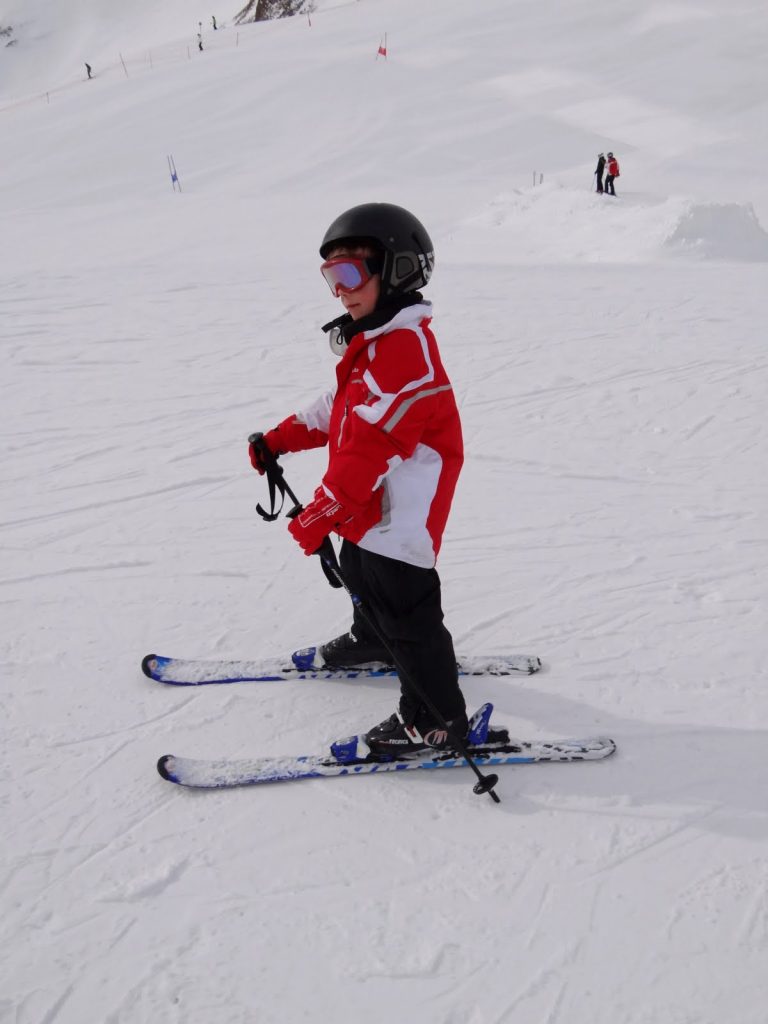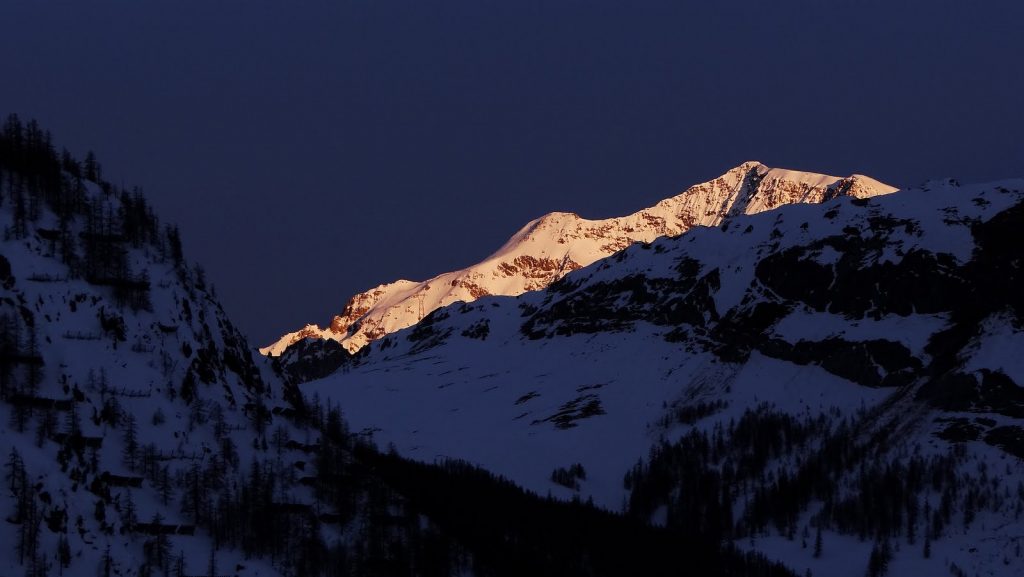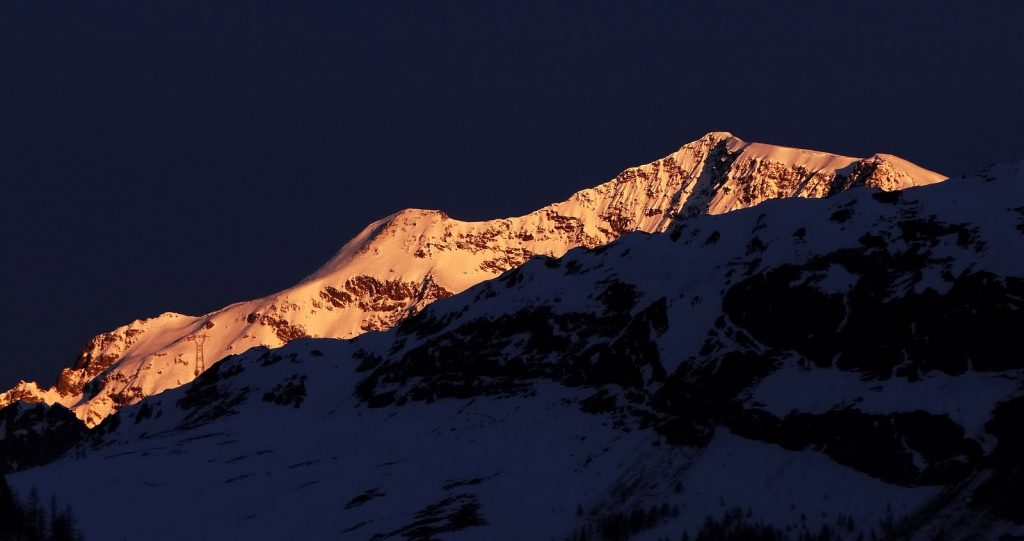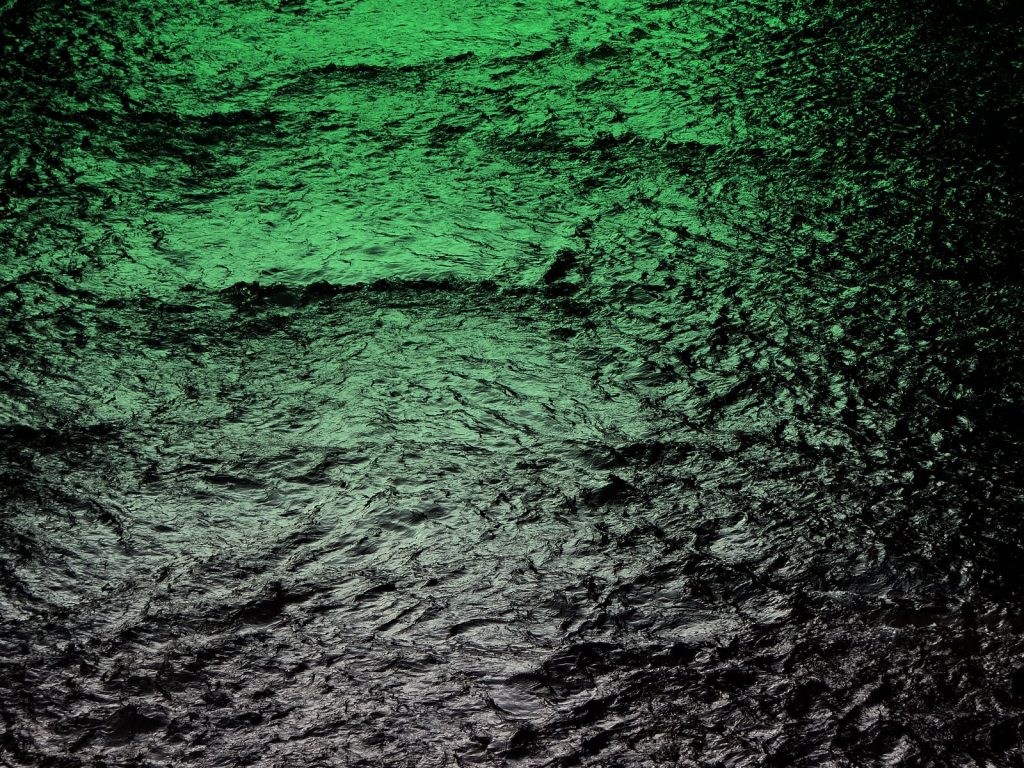Alex having a go at slalom
Mike was still weak from a bug but still able to focus on developing technique – which was just as well because we were only really getting started when the fever struck a few days ago.
Our aim was still to increase hip angulation. Mike was painfully aware of his lack of progress in this area. It was clear to me that we had to persist with the issue as directly as possible until changes started to come through. Mike found it hard to relate to pulling back with the outside hip through the turn so I decided to try a different approach.
Leg Alignment
The first thing we looked at was leg alignment and the use of the adductor muscles. I showed how the leg re-aligns when the hip is pulled back and that pulling inwards with the adductor muscles does not cause the knee to move inwards (which forces the hip outwwards). This pulling inwards should be present at all times.
Leg Rotation
Standing on the snow with the skis off – digging the heels in and facing downhill I showed how one leg could be placed behind the body with the toes pointing outwards and then how the foot could be swung around in an arc coming in close in front of the body with the toes pointing inwards. The idea was to feel the rotation of the leg in the hip socket without the pelvis moving. Mike had a lot of difficulty at first just trying to prevent the pelvis from swinging around the movement was so alien to him. It is important to avoid twisting the foot in the direction of the turn – the leg is rotated by swinging in an arc not by twisting. Mike’s stance looked better with the legs closer together.
Leg Rotation in Skating
Mike understood this model better than the previous ones. We then linked the process to skating. The skate begins with the toes pointing outwards and due to the ski making an arc the foot is brought back in front of the body in the same arc. Mike was feeling more of a rhythm with this action.
Hockey Stops
We did hockey stops to show that if the pelvis was allowed to rotate then the skier could not control a proper stop and would shoot across the hill instead. The hockey stop requires control over hip rotation, a sideslip and a lowering of the centre of mass. We did this on steep ground to make the consequences of the differences between right and wrong obvious.
Bumps and Pivot
When mike tried to do short turns he still had a tendency to push the leg outwards. This stiffens the leg and pulls the hips around and out from the turn centre. When he pulled inwards instead then he managed to not only control the pivoting much better but the turns were tighter and legs more flexed – due to the pulling inwards with the adductors. Most people want to push the ski away defensively but it has to be pulled inwards below the body to complete the turn. We used bumps to enhance the pivoting effect and worked on staying in the fall line in place of forward motion across the hill.
Short Swings
Earlier we had worked with skis off at jumping and swinging/rotating the legs beneath the body while keeping the pelvis still. The jumps had involved sending the centre of mass upwards and a smooth landing. Mike had distinct difficulty controlling his posture with his lower back at the same time as stopping the pelvis from rotating. Eventually we actually did some short swings in the fall line by jumping with the skis on. Initially Mike found the coordination for this tricky but he soon improved – using the pole plant and jumping off down the hill instead of vertically.
Carving
Close to the end of the session we applied the same principles of carving on a wide flattish section and this is where Mike started to understand the need to sink down into the turn to alter the edge angle of the skis and so increase and control the turning power. This happened immediately after seeing the video clip (shown above) with the limited range of movement. I showed Mike this video on the piste so he could identify that despite his own proprioceptive feedback probably giving him the impression that he was moving a lot the video would confirm that the opposite was in fact the reality. This combined with the carving where there is more time to feel things – seemed to encourage a clearer shift in perception. Once there is a proper function or purpose identified then perhaps it is easier make the body move through a more extensive range of motion. There was definitely a lack of physical awareness involved concerning the relative motion and placement of body parts – but combined with a lack of purpose there was little hope in provoking a lasting change.
It seemed clear that by the end of all those exercises that all of the above aspects had improved and that changes in physical, perceptual and intellectual understanding were all well under-way.
Mont Pourri in the background – sunrise
The river Isère – cold mountain water – the patterns in motion were mesmerising.




